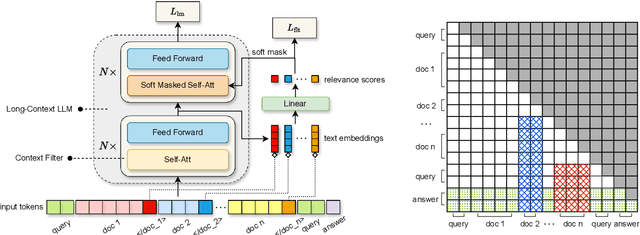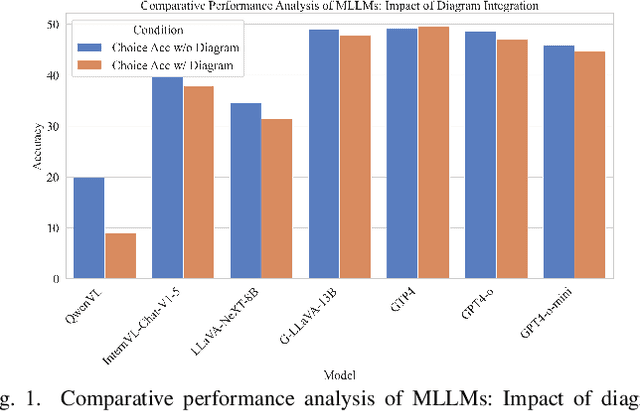Jingyang Deng
GeoUni: A Unified Model for Generating Geometry Diagrams, Problems and Problem Solutions
Apr 14, 2025Abstract:We propose GeoUni, the first unified geometry expert model capable of generating problem solutions and diagrams within a single framework in a way that enables the creation of unique and individualized geometry problems. Traditionally, solving geometry problems and generating diagrams have been treated as separate tasks in machine learning, with no models successfully integrating both to support problem creation. However, we believe that mastery in geometry requires frictionless integration of all of these skills, from solving problems to visualizing geometric relationships, and finally, crafting tailored problems. Our extensive experiments demonstrate that GeoUni, with only 1.5B parameters, achieves performance comparable to larger models such as DeepSeek-R1 with 671B parameters in geometric reasoning tasks. GeoUni also excels in generating precise geometric diagrams, surpassing both text-to-image models and unified models, including the GPT-4o image generation. Most importantly, GeoUni is the only model capable of successfully generating textual problems with matching diagrams based on specific knowledge points, thus offering a wider range of capabilities that extend beyond current models.
FltLM: An Intergrated Long-Context Large Language Model for Effective Context Filtering and Understanding
Oct 09, 2024



Abstract:The development of Long-Context Large Language Models (LLMs) has markedly advanced natural language processing by facilitating the process of textual data across long documents and multiple corpora. However, Long-Context LLMs still face two critical challenges: The lost in the middle phenomenon, where crucial middle-context information is likely to be missed, and the distraction issue that the models lose focus due to overly extended contexts. To address these challenges, we propose the Context Filtering Language Model (FltLM), a novel integrated Long-Context LLM which enhances the ability of the model on multi-document question-answering (QA) tasks. Specifically, FltLM innovatively incorporates a context filter with a soft mask mechanism, identifying and dynamically excluding irrelevant content to concentrate on pertinent information for better comprehension and reasoning. Our approach not only mitigates these two challenges, but also enables the model to operate conveniently in a single forward pass. Experimental results demonstrate that FltLM significantly outperforms supervised fine-tuning and retrieval-based methods in complex QA scenarios, suggesting a promising solution for more accurate and reliable long-context natural language understanding applications.
Diagram Formalization Enhanced Multi-Modal Geometry Problem Solver
Sep 09, 2024



Abstract:Mathematical reasoning remains an ongoing challenge for AI models, especially for geometry problems that require both linguistic and visual signals. As the vision encoders of most MLLMs are trained on natural scenes, they often struggle to understand geometric diagrams, performing no better in geometry problem solving than LLMs that only process text. This limitation is amplified by the lack of effective methods for representing geometric relationships. To address these issues, we introduce the Diagram Formalization Enhanced Geometry Problem Solver (DFE-GPS), a new framework that integrates visual features, geometric formal language, and natural language representations. We propose a novel synthetic data approach and create a large-scale geometric dataset, SynthGeo228K, annotated with both formal and natural language captions, designed to enhance the vision encoder for a better understanding of geometric structures. Our framework improves MLLMs' ability to process geometric diagrams and extends their application to open-ended tasks on the formalgeo7k dataset.
 Add to Chrome
Add to Chrome Add to Firefox
Add to Firefox Add to Edge
Add to Edge